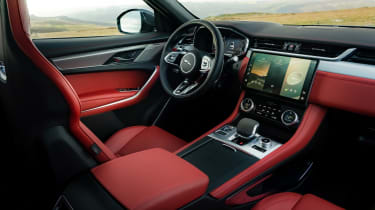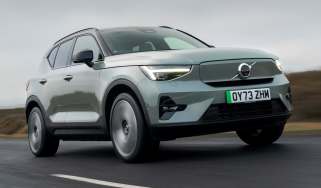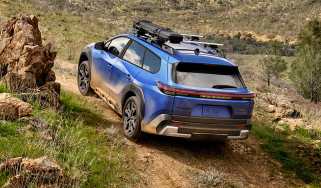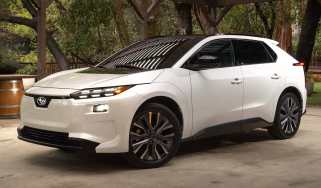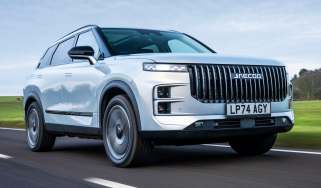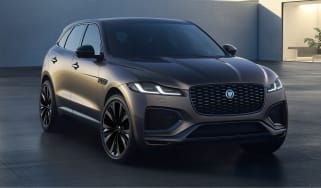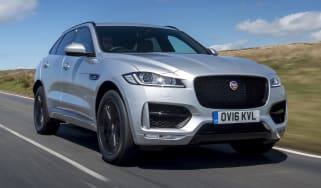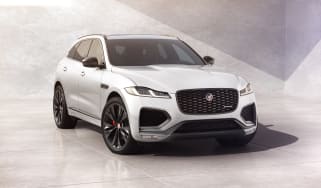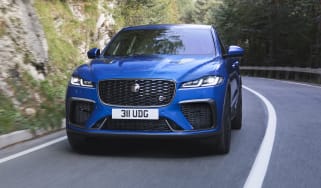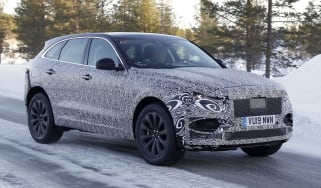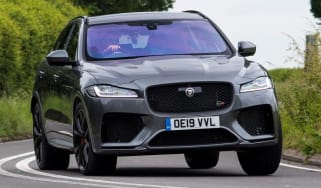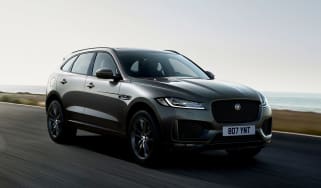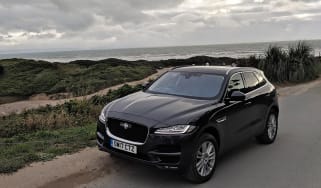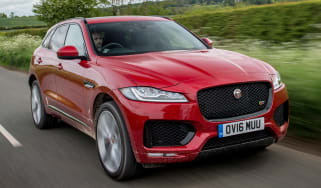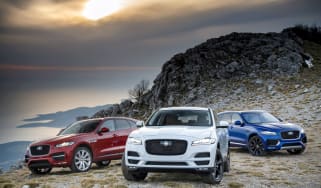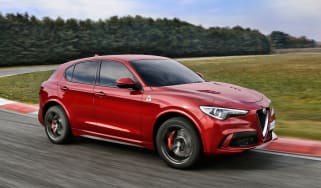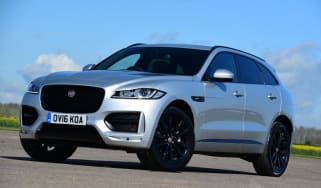Jaguar F-Pace SUV review
“The Jaguar F-Pace looks good and has sharp handling, while also working well as a family car”
Pros
- Smooth and powerful engines
- Fun to drive
- Fantastic interior and tech
Cons
- Top models are expensive
- High CO2 emissions
- Slimmed-down engine range
Is the Jaguar F-Pace a good car?
While much of Jaguar’s lineup has fallen behind German rivals, the F-Pace has managed to keep up thanks to several substantial updates. With a sporty drive, a frugal plug-in hybrid powertrain and a tech-filled interior that’s now plusher than ever, the Jaguar F-Pace is an appealing choice if you’re looking for a mid-size premium SUV.
Jaguar F-Pace range
After a long history of building sports cars and premium saloons, the Jaguar F-Pace became the British marque’s first SUV in 2016, and it has proved to be a great success.
It was certainly necessary, because in recent years there’s been a growing trend towards SUV ownership, and models from rival manufacturers like the BMW X3, Audi Q5 and Volvo XC60 were hoovering up sales. This area of the market also now includes driver-focused models like the Porsche Macan, as well as luxury-led cars such as the latest Mercedes GLC.
For 2021, the F-Pace came in for a major overhaul, even if exterior changes were fairly subtle. Most were concentrated at the nose, where a new grille and slim headlights with 'double J' LED running lights inspired by the all-electric Jaguar I-Pace were introduced. There was also a new set of rear lights. Otherwise, Jaguar wisely decided not to fiddle too much with the SUV's already attractive proportions.
More reviews
Road tests
Used car reviews
There were bigger changes inside, where the infotainment setup, steering wheel and controls were all updated. The old InControl system was replaced with Pivi Pro, which features a responsive and attractive glass 11.4-inch central display. We think it’s one of the best systems on the market, although F-Pace owners didn’t rank infotainment, connectivity and electrics among their favourite things in the 2023 Driver Power satisfaction survey.
Much of the technology found in the F-Pace is shared with the Jaguar XE and Jaguar XF saloons, including the Ingenium engine range. Every Jaguar F-Pace model comes as standard with all-wheel drive and an automatic gearbox, with the extensive engine line-up including a 247bhp 2.0-litre petrol and a 201bhp 2.0-litre diesel. There's also a 3.0-litre diesel and petrol unit, plus a flagship SVR version with a 542bhp 5.0-litre V8 petrol engine. Alternatively, eco-conscious and business drivers may prefer the P400e plug-in hybrid (PHEV) with its 40-mile electric range and low Benefit-in-Kind tax rating.
Jaguar has slimmed the F-Pace’s trim level lineup for 2023, with buyers able to choose from one of five distinct specifications: R-Dynamic S, R-Dynamic SE Black, R-Dynamic HSE Black, 400 Sport and the high-performance SVR model. As you’d expect from a car that starts from around £50,000, standard equipment is strong, with all F-Pace models getting LED headlights, heated leather seats and a digital instrument cluster.
What about buying a used or nearly new Jaguar F-Pace?
A mid-sized luxury SUV that’s an utter pleasure to drive, the F-Pace has a been a relatively big seller for Jaguar and consequently you’ll find lots of used examples to choose from at a wide range of different price points – early, high mileage examples now start from less than £15,000, though many of these have the less desirable (and now discontinued) manual gearbox. If you’re able to spend between £20-30,000 you’ll have far more choice, with lower mileage automatics well within reach.
The F-Pace is spacious, comfortable and well equipped, while nearly all its petrol and diesel engine options provide spirited performance, even if their fuel economy is eclipsed by that of rivals. Reliability issues dogged early examples and there was a string of recalls, but by now most of the problems should have been fixed. A refined and practical cruiser, the F-Pace is one of the most appealing vehicles of its type on the secondhand market.
What’s its history?
The F-Pace went on sale in the UK in 2016 and was Jaguar’s first-ever SUV. Good to look at and to drive, the F-Pace was launched with a 2.0-litre turbocharged diesel engine with two different power outputs, together with a pair of 3.0-litre V6s, one a supercharged petrol, the other a turbocharged diesel. A year or so later a 2.0-litre turbocharged petrol engine was added, while the 2.0-litre diesels were updated.
Shortly afterwards a supercharged V8 petrol engine with 543bhp was introduced to power the high performance SVR flagship. In 2021 the car was facelifted and the engine range was again revamped to improve the F-Pace’s fuel economy and emissions.
Read the full Jaguar F-Pace Mk1 used review...


